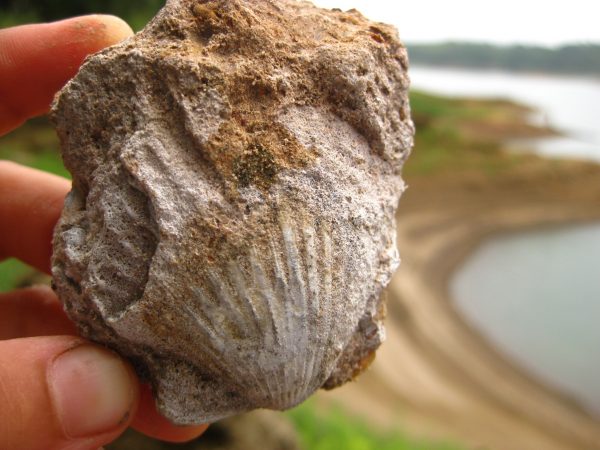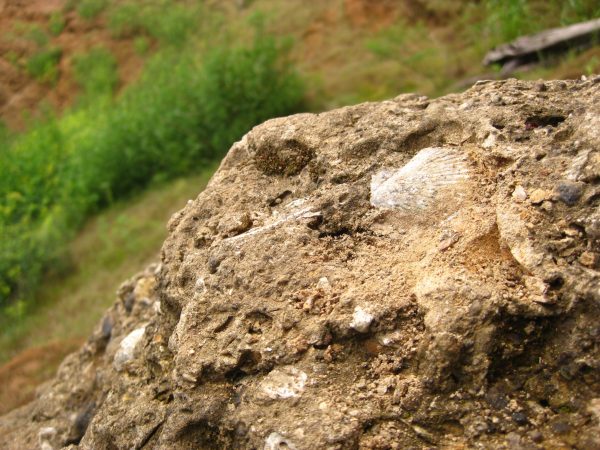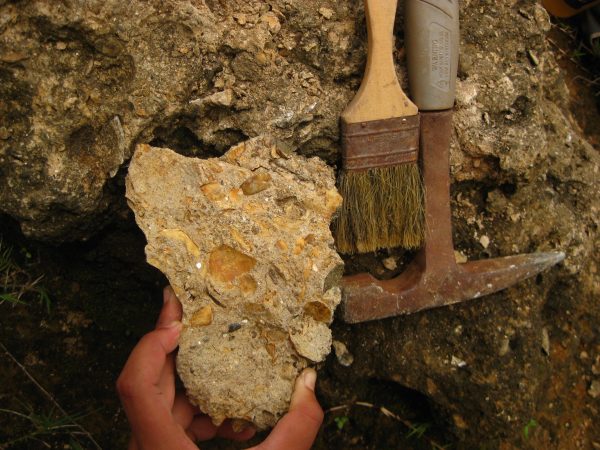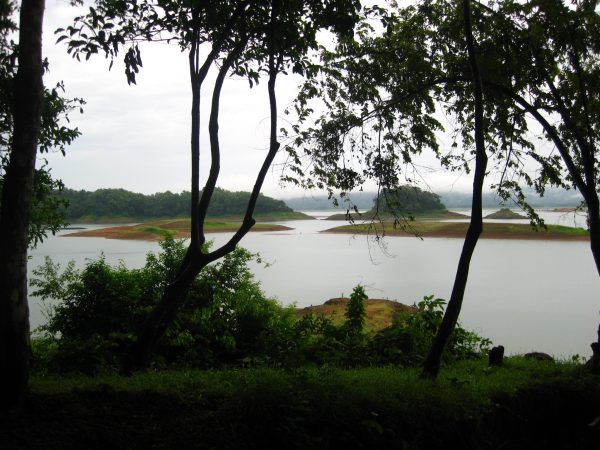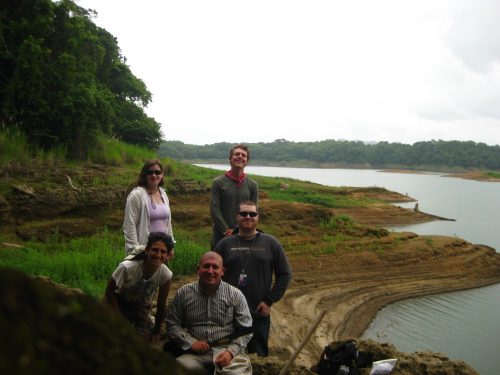
A visit to Panama City by paleontologists Cristina Robins and Ian Cannon from the University of Florida this past week meant several field days focused on sampling invertebrate fossils. The goal: to obtain a better picture of the diversity of invertebrate communities within the formations in the Panama Canal, and increase collections of crustaceans and mollusks to be studied back at the University of Florida. Most exciting was our visit to a site outside the boundary of the Canal Excavation, to sample from the Alajuela Formation. Pictured below, Lago Alajuela, a man-made lake created along the Chagres River and major reservoir within the Canal watershed.
The calcareous sandstones and fossil-rich marine limestones of the Alajuela formation are slightly younger than the rocks which outcrop in the Canal Zone. Here, it is much more common to find sharks teeth, similar to those found in the Gatun Formation (of Megalodon pride, aged approximately 5-10 million years younger than the formations within the canal).
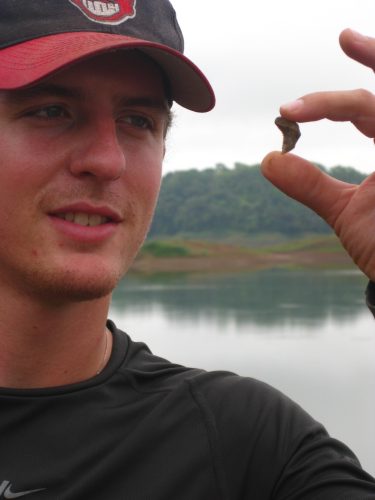
But, this week the focus was on organisms that often garner much less attention: invertebrates.
To sample for invertebrate diversity required cutting into the sandy-limestone matrix, to access fossils that were better preserved.
Many of the sections in which we searched were chaotic beds of oysters and other bivalves (two-part shells), depositional settings in which sea-surface critters grew and accumulated upon each other in every which direction.
The area around Lago Alajuela as well as the larger Chagres watershed is preserved as a National Park (Parque Nacional). The watershed surrounding the canal, of which the Chagres is a major tributary, is important in providing water for both the canal (of billion-dollar yearly economic value), and also supplies water to three of the largest cities in Panama: Panamá City, Chorrera and Colón (as well as generating water for la ciudad de Panamá and Colón!). The locks of the canal alone use 52 gallons of freshwater a year to operate.
More information on the park and conservation initiatives in Panama can be found here: Parque Nacional Chagres.
 Cast of a scallop shell, preserved in calcareous limestone of the Alajuela Formation.
Cast of a scallop shell, preserved in calcareous limestone of the Alajuela Formation. Scallop shell preserved in fossiliferous limestone of the Alajuela Formation. The white color is a result of the calcium-rich carbonate material, from which the shells are made.
Scallop shell preserved in fossiliferous limestone of the Alajuela Formation. The white color is a result of the calcium-rich carbonate material, from which the shells are made. Cutting into the bedrock to discover more complete preservation inside. A photograph of a freshly cut surface, with tools for scale.
Cutting into the bedrock to discover more complete preservation inside. A photograph of a freshly cut surface, with tools for scale. Lago Alajuela
Lago Alajuela
To work within the serenity of such an expansive lake (though constructed) is quite a privilege, though the threat of crocodiles has kept most out of the water.
Photography and text by Gina Roberti, PCP-PIRE Intern.
